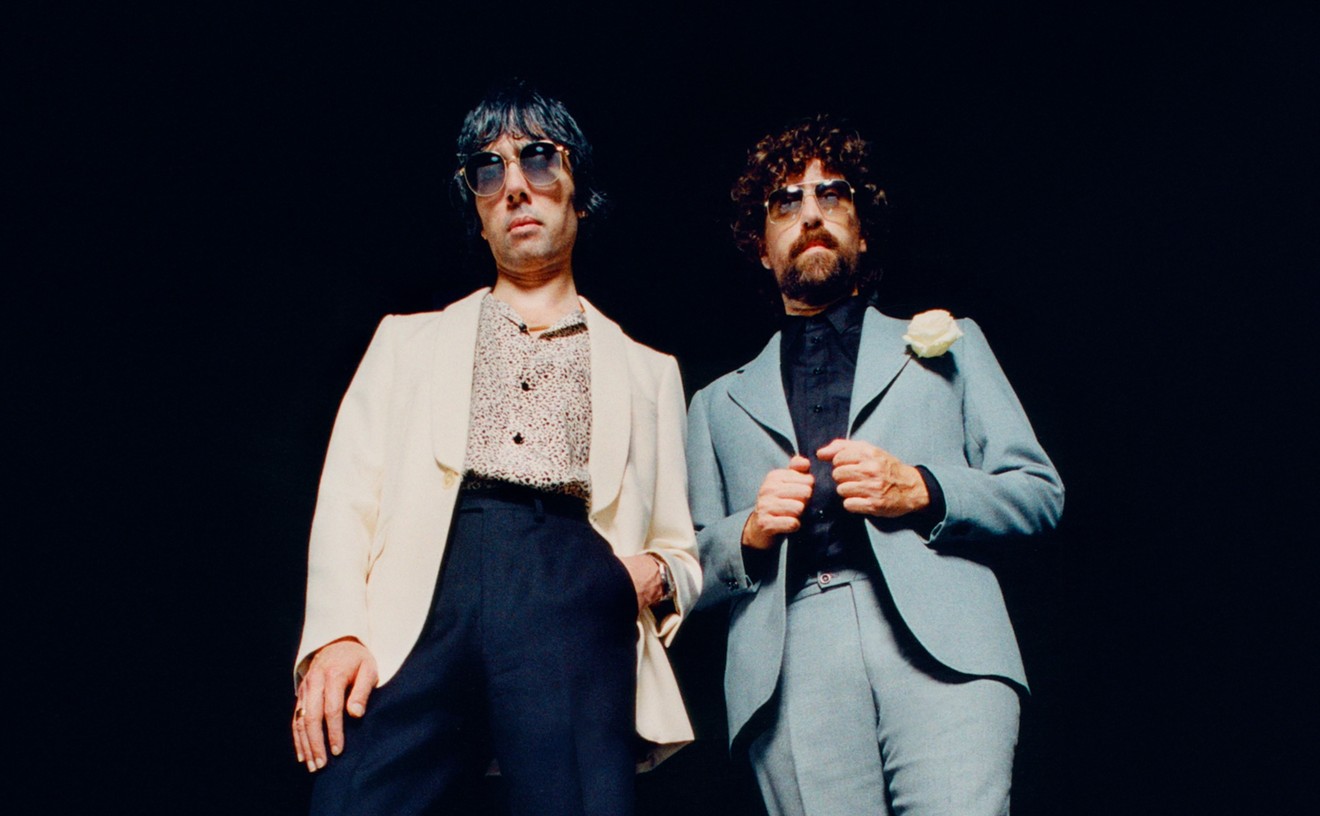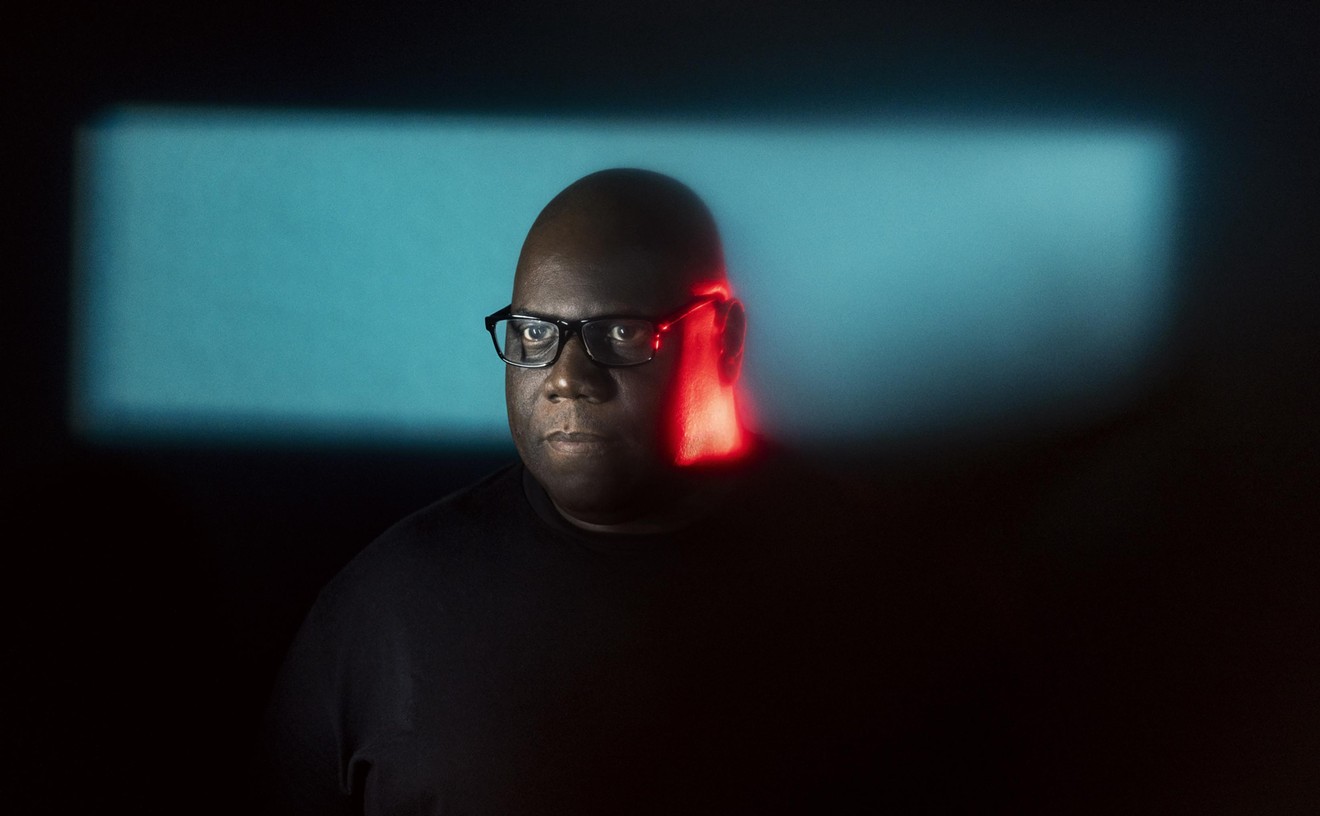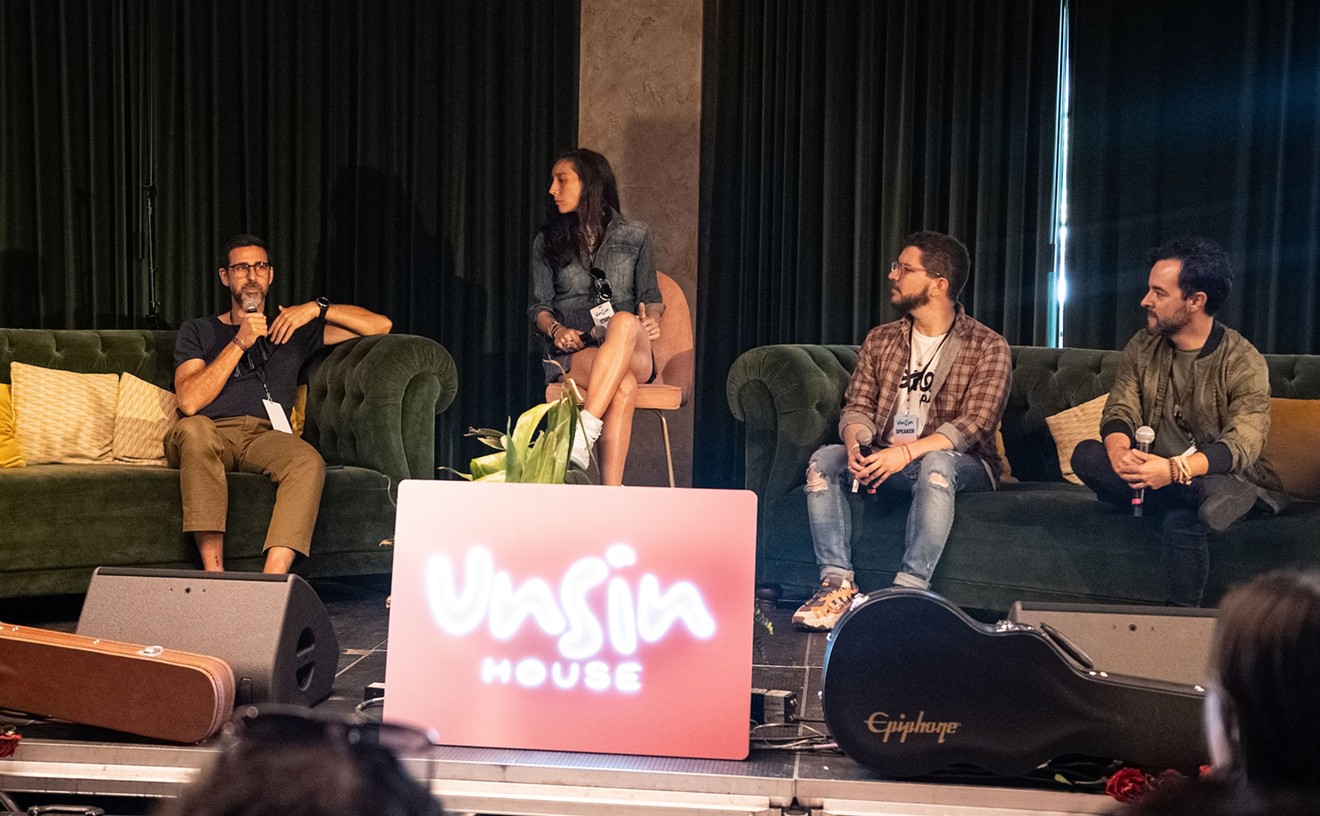"It definitely helps self-esteem, but basically it's just a fun tool, a vehicle we can use to communicate with each other," Sylk says. The 29-year-old DJ's four-hour show on Jamz (WEDR-FM 99.1) is the number-one rated radio program in its time slot for all of Miami, for listeners ages 12 to 54. Sylk cites the roll call and other audience-participation segments of the show as the reason for his popularity. "When you call in and rap or sing or shout out to your friends, you're representing, you're standing for something, whether it's your school, your neighborhood, or your posse. You're standing for your people."
Sylk's show is one local manifestation of the premise behind the much acclaimed Broadway show Bring in 'Da Noise, Bring in 'Da Funk, a spectacular celebration of the African-American experience from slavery to the present. Playing at the Jackie Gleason Theater in Miami Beach through Sunday, the Tony Award-winning musical, credited with reviving tap dance when the show premiered in 1995, is not simply a revue. Nor is it a thumping display of sonic gymnastics along the lines of Stomp, the self-consciously streetwise percussion show previously seen at TOPA. Featuring a young cast, some of whom were former street performers, Noise/Funk presents a social history of American rhythm (blues, gospel, funk, hip-hop) told through artfully energetic drumming, tap, song, and rap.
"Anyone who goes to see this show really doesn't have an idea of what they're going to get," says Richard Cummings, the musical conductor for the show's touring company, on the phone from a hotel room in the Midwest. "Noise/Funk seems to be advertised as a joyous entertainment event, but it's really much deeper than that." The show was conceived for New York's Public Theater by director George C. Wolfe and prodigious tap dancer Savion Glover (who reportedly told Wolfe his idea was to "bring in 'da noise and bring in 'da funk to the staid environs of the theater"). "I'm interested in how," Wolfe writes in the liner notes to the show's soundtrack album, "if you actively unearth popular culture and look inside it, you can find all kinds of secrets and truths and rhythms of a time period, much more than you find in a written history."
Says Cummings: "The first thing we learn in the show is that the drums were taken away from the Africans brought to America as slaves in order to keep them from communicating." Cummings is a New York-based pianist who has performed with Harry Belafonte and Hugh Masekela, among others. He conducts a seven-piece orchestra in the pit as well as the musical performers onstage. "But when the drums were taken," he continues, "the beat just moved to the body. In actuality tap dancing is just drumming with the body and the feet."
Organized chronologically the 25 musical numbers comprising Noise/Funk suggestively depict lynchings in the South, migration to the North with the railroads, the grinning blackface era of Hollywood tap dancing, and Harlem's golden age and its later decay. In one comic contemporary scene set to a symphony of car horns, screeching breaks, record scratching, tribal drumming, and hip-hop tapping, black men of various classes attempt in vain to get a cab to stop for them in New York City.
Early on in the show, "Somethin' from Nothin'," a spiritual accompanied by tap beats and spoken word, tells the story of the tedious lives of slaves on a South Carolina plantation, further oppressed after a foiled rebellion. The dancers portray the laborers entertaining themselves; without using instruments they pound out call-and-response rhythms with their hands and feet. As they assert themselves in spite of the landowners' efforts, the dancing gets faster, taking on the aggressive rhythm of African war drums. "I'm not sure it was supposed to be such a powerful number as far as telling what the show is about, but something from nothing is a recurring theme," Cummings explains. "No matter what happens or how much oppression occurs, there is always the spirit of survival."
That spirit is laid out by the didactic social content of the show, but also embodied by the performers themselves. Noise/Funk made Glover a star, a postmodern hoofer for the hip-hop era. (He performed here last summer as part of Wyclef Jean's Carnival concert in Bayfront Park.) He also became a hero for a lot of kids, some of whom have been part of the show's past or present casts. Back when the show had its first success at the Public Theater, Glover, who started dancing when he was a child, founded a workshop he called Funk University, to develop and teach the soulful, energetic style of tap he calls hittin'.
Although Glover, now on to other projects, does not travel with the road show, the current cast has received glowing reviews. (They teach workshops for schoolchildren in each of the cities in which they perform.) Their dancing is riveting and so energetic that the cast rotates each week to prevent exhaustion. A couple of the best numbers in the show are minimally decorated scenes in which the dancers alternately solo while talking about their lives. ("Tap saved me," one declares.) Also featured in the show are a group of drummers who play on plastic buckets, pots, and pans. Those in the original cast were street performers who Glover saw playing in front of the New York Theater and incorporated into the show.
Cummings notes that this last form of improvised self-expression is particularly notable within the context of the show: By representing themselves, they're repeating history. "They were musicians who would play their drums on the street and the police would confiscate their drums, so they started playing on buckets," Cummings explains. "It goes back to the beginning, when the drums were taken away from us as slaves. The buckets are containers used for Sheetrock adhesive, but something wonderful happened when the mother of invention came upon these buckets. They make great drums, and when the cops take them, you just get some more.










